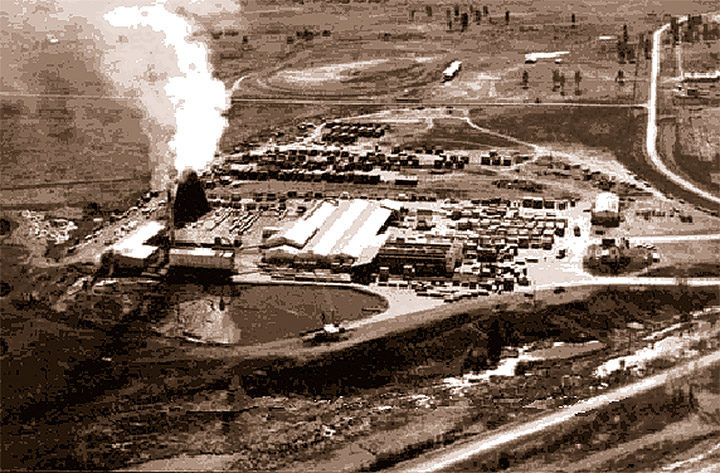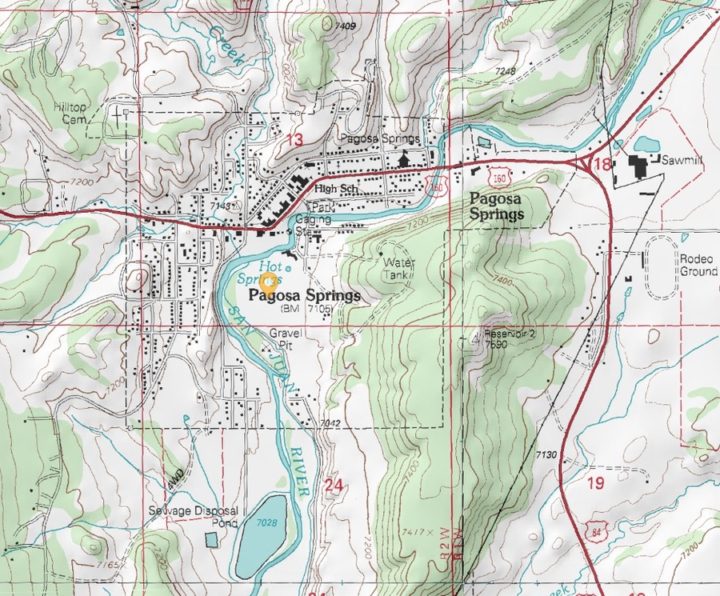At last night’s March 1 meeting of the Pagosa Springs Town Council, Planning Director James Dickhoff gave an overview of an ambitious municipal project, apparently aimed at addressing the community’s housing crisis.
From the agenda packet for the meeting:
The Town Council has prioritized Workforce Housing in its annually adopted Goals and Objectives since at least 2017 and has subsequently adopted numerous policies and code amendments to support the development of workforce housing as well budgeting annual appropriations.
Town Staff had recently submitted a Letter of Interest to the Department of Local Affairs for a “1271 Affordable Housing Development Incentives Grant Program” for assistance with installing infrastructure to support a workforce housing development. Staff has received a formal invitation to submit a grant application under this funding program, and recommends that Town Council support the grant application for a 35-acre workforce housing development with the Mountain Crossings subdivision.
Preliminary Engineering estimates indicate the extension of water, sewer, electric and roadways to serve the first phase and stage the development of future build-out phases will costs approximately $2,750,000. The maximum grant amount we can request is $3,000,000, and staff recommends Town Council consider up to that amount for our grant application. The minimum match required is 20% (= $600,000 for a $3,000,000 request).
If awarded, the project will need to be completed by June 30, 2024…
FISCAL IMPACT:
Matching Funds up to $600,000 through June 30, 2024
According to Mr. Dickhoff’s presentation, the long-delayed Mountain Crossing mixed-use development project, located immediately east of the Highway 160/Highway 84 intersection, includes three 35-acre parcels. If the Town is successful with the above mentioned “1271” Grant, said Mr. Dickhoff, the $3 million would be used to bring streets, water, sewer, electrical, (and perhaps broadband?) to one of those 35-acre parcels, to serve ‘Phase One’ of a development. The development project could feasibly include a wide range of housing types, Mr. Dickhoff told the Council.
When asked if the project could be completed by June, 2024, Mr. Dickhoff indicated that, as currently envisioned, only ‘Phase One’ would be attempted, and would include only installation of streets and infrastructure — not actual housing. Yes, he thought ‘Phase One’ could be completed within the stated time frame.
The Council approved a resolution to apply for the Colorado “1271” grant, after Mr. Dickhoff assured the Council that the Town had already received a high ranking from the grants committee. The grant application is due Monday.
Later in the meeting, the Council entered into a closed-door executive session, to discuss the possible purchase of real estate at Mountain Crossing. No decision was made during that executive session, we will assume, because Colorado governments are prohibited from making decisions during a closed-door, non-public discussion.
We’ve been hearing rumors of a mixed-use development at Mountain Crossing for the past 25 years. The site was once home to the San Juan Lumber Company, owned by the Hudspeth family. We can see the location of the sawmill in this topo map from the 1970s, at the far right.
The topographic map image above appears to date from around 1975. We can note a few details… things that have changed since the 1970s. Hot Springs Boulevard didn’t exist. There was a gravel pit in the middle of what is now the Town-owned wetlands. The largest building complex was the Sawmill, at the intersection of Highways 160 and 84.
Last year, we shared an interview with former Pagosa mayor, Ross Aragon, discussing the affordable housing projects built by non-profit Archuleta Housing Corporation during the early 1970s, when the San Juan Sawmill was going great guns, and serving as the community’s largest employer.
Mayor Aragon:
“The person who initiated the [housing project] was Father Bernard. He was the one who said, we needed housing for people. At that time, the housing [in Pagosa] was remnants of the early 1900s. We didn’t have a sewer system until 1960, and that’s about the time we got TV. We were kind of sheltered, I guess you could say. We didn’t know much about the outside world…
“But by 1974, there was a demand for housing, mainly because of the sawmill… there had always been small sawmills here, that employed five or six guys… but when John Hudspeth came in, from Oregon, his sawmill employed 200 people. It stimulated the economy; and that was the good news. But about that time, they noticed that they needed housing, and Father Bernard — all the guys on the board were Catholic, so of course they listened to Father Bernard. They were all very loyal to him…
“And now, we’re looking at the same thing — a shortage of workforce housing. Some things repeat themselves… it’s going to get to the point, where a lot of people aren’t going to be able to afford to live here…”
A few of the old timers who live here in Pagosa Springs can still recall the operation of the San Juan Lumber Company, located on what is now a vast vacant parcel — a few hundred yards from the heart of downtown Pagosa Springs.
Here’s a photo showing an aerial view of the mill. Highway 160 is shown at the bottom right of the photo, and a section of Highway 84 curves through the top right. The road running horizontally across the top of the photo is Mill Creek Road.

The lumber mill operated for about 20 years — and providing maybe 25 percent of the employment in Archuleta County. Here’s a short quote from a longer article about the Pagosa Springs lumber industry, written by journalist Norm Vance for the PagosaSprings.com website:
Later, when better roads were built, larger mills exported lumber. Mills dotted the landscape and they were known as “the sawmill octopus” for the tentacle like roads in every direction servicing the mills. Many of those roads we travel today. After the turn of the 20th century the railroad spur came to Pagosa and production increased. By the mid 1950s the Hudspeths bought most of the smaller mills and consolidated production at The San Juan Lumber Mill…
The mill opened in 1958 and closed in the late 1970s. A combination of the Forest Service becoming more protective of the forest, environmental problems when the smoke settled in town and poor management by the Hudspeths brought big milling in Pagosa Country to a stop. When the San Juan Lumber Co. closed it employed 1/4 of the county population…
What might not be obvious from this old photo, and from the old maps, are the polluted soils left behind by the Hudspeth family, when they shut the mill down.
Is the soil still polluted? And in need of expensive environmental remediation?
That question was not discussed at last night’s Town Council meeting.


